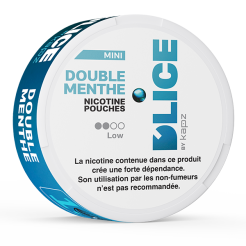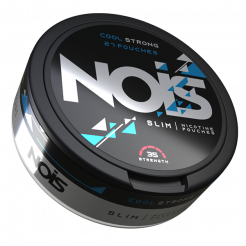Consommation de nicotine : Tabac à chiquer vs nicopods, des frères ennemis
- Les Dossiers d'Assia
- 12197 vues

Ils font tous les deux partie de la même famille et pourtant, ils sont difficilement assimilables. Le tabac à chiquer et les nicopods sont de vrais frères ennemis. Le premier est beaucoup plus ancien. Le tabac à chiquer était un vrai phénomène de mode jusqu’au siècle dernier. Au point d’être particulièrement apprécié des Américains, producteurs historiques de tabac, avant de tomber en désuétude. Avec l'interdiction de production et commercialisation du snus en France, le tabac à chiquer fait petit à petit son retour. Est-ce vraiment pour le meilleur ? En face de ce dernier, les nicopods se présentent comme une solution plus moderne pour combler son manque de nicotine. Les nicopods sont nommés de bien des manières : nicopouches, pouches de nicotine, sachets de nicotine ou encore snus sans tabac*.
Comment utiliser du tabac à chiquer ?
Le tabac à chiquer est également consommé par voie orale et sans fumée. Il existe sous plusieurs formes : en feuilles mobiles, trempées, en plugs et en twists. Comment utiliser du tabac à chiquer ? La plupart du temps, les feuilles de tabac sont râpées plus ou moins finement et aromatisées. Le tabac à chiquer est ensuite mastiqué. La mastication du tabac à chiquer libère de la nicotine et d’autres substances chimiques. Ce“cocktail” est surnommé le jus de tabac. Il stimule les glandes salivaires. C’est pour cette raison que les personnes consommant du tabac à chiquer ont besoin de recracher l’excédent de salive et de jus.
Quelle est la différence entre Nicopods et tabac à chiquer ?
Parmi les formes orales, vous connaissez les nicopods. Ces petits sachets blancs sans tabac se glissent discrètement entre la lèvre et la gencive. Ils libèrent ensuite de la nicotine pendant 20 à 45 minutes en moyenne. Les emballages de différentes tailles sont fabriqués à partir de fibres naturelles. Cela permet d’obtenir une quantité de produit régulière et un dosage standardisé et constant.
Quelle est la différence entre le tabac à chiquer et le snus ?
Le tabac à chiquer et le snus sont des formes orales de tabac. Toutefois, il ne faut pas les confondre ! Quelle est la différence entre le tabac à chiquer et le snus ? Le snus est illégal en France à l’inverse du tabac à chiquer. Le snus se présente sous la forme de sachets de tabac humide que l’on place entre la lèvre et la gencive. Aucunement besoin de le mâcher, la nicotine est absorbée par les muqueuses. Pour libérer la nicotine du tabac à chiquer, la mastication est nécessaire. On le trouve d’ailleurs sous des formes adaptées à cette pratique : en feuilles volantes, en palettes de tabac ou encore sous forme de tabac tressé.
Quels sont les effets du tabac à chiquer ?
Qu’il s’agisse du tabac à chiquer ou des nicopods, les deux produits contiennent de la nicotine. C’est cette substance qui crée la dépendance. Quels sont les effets du tabac à chiquer ? Même s’il s’agit de tabac sans fumée, le tabac à chiquer présente tout de même certains dangers pour la santé. Ceux-ci sont intrinsèquement liés au tabac. L’action de mâcher du tabac pur expose directement les muqueuses à des substances nocives et particulièrement addictives. Le tabac à chiquer délivre une quantité importante de nicotine en peu de temps. Il peut arriver que des maux de tête surviennent pour les symptômes les plus légers. D’autres conséquences plus importantes ont été observées.
La plupart du temps, les gros consommateurs de tabac à chiquer ont les dents qui se colorent en marron. Il arrive également que les gencives se rétractent. Les consommateurs réguliers de tabac à chiquer ont un risque élevé de cancer, de maladies cardio-vasculaire et même de cholestérol.
Le principe des nicopods est de libérer une dose contrôlée de nicotine grâce aux différentes teneurs disponibles. Ils ne laissent aucun résidu dans la bouche grâce à leurs sachets en fibres naturelles. Les risques pour la santé restent tout de même plus élevés que pour les non-consommateurs. Les nicopods sont différents du snus et n’exposent pas aux mêmes risques. Il vaut mieux se tourner vers les nicopods car ils offrent la possibilité d’absorber sa dose de nicotine sans les méfaits liés au tabac. Grâce aux arômes, les consommateurs de nicotine gardent la notion de plaisir. Un élément essentiel pour éviter la frustration et donc réussir son sevrage tabagique.
Vous pouvez utiliser les nicopods pour réduire progressivement votre consommation de nicotine grâce aux différentes teneurs. Ce produit est destiné aux fumeurs majeurs souhaitant une alternative à la cigarette dont les risques sont réduits. Il peut également accompagner les fumeurs dans leur démarche de sevrage tabagique.
* La nicotine contenue dans ce produit crée une forte dépendance. Son utilisation par les non-fumeurs n’est pas recommandée. Exclusivement prévu à la vente des personnes majeures.



